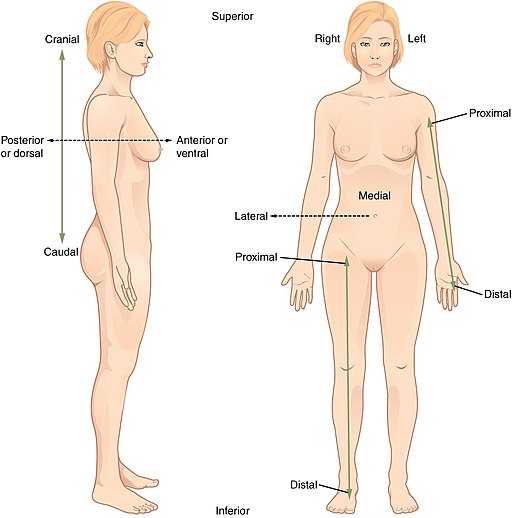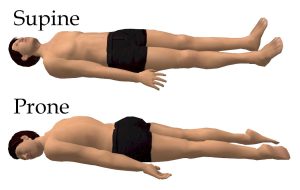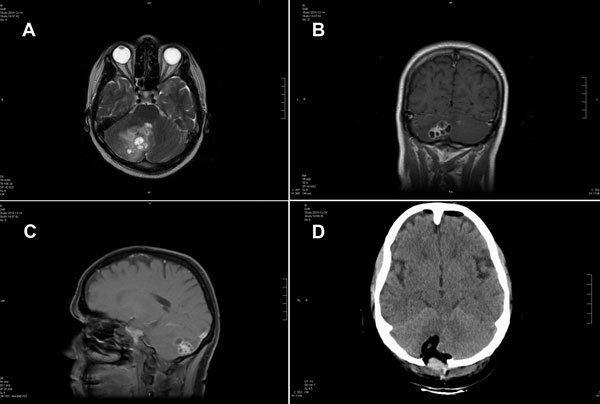5.3 Directional Terms and Body Planes
Directional terms are essential for describing the relative locations of different body structures; for example, wounds, tumours, or injuries. For instance, a surgeon might describe one band of tissue as “inferior to” another, or an oncologist might describe a tumour as “superficial to” a deeper body structure.
Directional Terms
- Anterior (or ventral) describes the front or the direction toward the front of the body; for example, the chest is anterior to the spine.
- Posterior (or dorsal) describes the back or the direction toward the back of the body; for example, the spine is posterior to the chest.
- Superior (or cranial) describes a position above or higher than another part of the body; for example, the heart is superior to the diaphragm.
- Inferior (or caudal) describes a position below or lower than another part of the body; for example, the pelvis is inferior to the abdomen.
- Lateral describes the side or the direction toward the side of the body; for example, the thumb is lateral to the fingers.
- Medial describes the middle or the direction toward the middle of the body; for example, the sternum is medial to both lungs.
- Supine describes a horizontal position with the body facing upward; for example, the patient lies supine during sleep.
- Prone describes a horizontal position with the body facing downward; for example, the spine is examined in the prone position.
Fig. 5.13 is an image of the directional positions described above. Fig. 5.14 shows both supine and prone positioning.


Body Planes
A section is a two-dimensional surface that has been “cut” from a three-dimensional structure. Modern medical imaging devices enable clinicians to obtain “virtual sections” of living bodies; we call these scans. Body sections and scans can be correctly interpreted only if the viewer understands the plane along which the section was made.
A plane is an imaginary two-dimensional surface that passes through the body. There are three planes commonly referred to in anatomy and medicine:
- The sagittal plane is the plane that divides the body or an organ vertically into right and left sides. It is also called the lateral plane. If this vertical plane runs directly down the middle of the body or an organ, it is called the midsagittal plane.
- The frontal plane is the plane that divides the body or an organ into an anterior (front) portion and a posterior (rear) portion. The frontal plane is often referred to as the coronal plane.
- The transverse plane is the plane that divides the body or organ horizontally into upper and lower portions.
- The transverse plane is also called the axial plane. Transverse planes produce images referred to as cross-sections.

Fig. 5.15 is an image of the three body planes using imaginary planes to help you visualize what each one would look like. The structure and condition that a physician is assessing will determine which plane will be ordered for a particular test.

Key Concept
Fig. 5.16 shows MRI and CT images of a brain using the different planes described above.
- Image A is an MRI image of a brain in the transverse or axial plane.
- Image B is an MRI image of the brain using the frontal or coronal view.
- Image C is an MRI image of the brain using the sagittal or lateral view.
- Image D is another transverse view of the brain using a CT scan.
Table 5.2. Combining Form Review
| COMBINING FORMS | MEANING |
|---|---|
| anter/o | front |
| later/o | side |
| poster/o | back, behind |
| radi/o | X-ray |
(Carter & Rutherford, 2020)
Exercises
Attribution
Unless otherwise indicated, material on this page has been adapted from the following resource:
Betts, J. G., Young, K. A., Wise, J. A., Johnson, E., Poe, B., Kruse, D. H., Korol, O., Johnson, J. E., Womble, M., & DeSaix, P. (2013). Anatomy and physiology. OpenStax. https://openstax.org/details/books/anatomy-and-physiology licensed under CC BY 4.0
References
Carter, K., & Rutherford, M. (2020). Building a medical terminology foundation. eCampusOntario. https://ecampusontario.pressbooks.pub/medicalterminology/ licensed under CC BY 4.0
Image Credits (images are listed in order of appearance)
Directional Terms by OpenStax, CC BY 3.0
Supine and prone 2012-02-20 by Asanagi, CC0 1.0
Planes of Body by OpenStax, CC BY 3.0
Cerebral MRI of Taenia crassiceps tapeworm infection by Vasileios Ntoukas, Dennis Tappe, Daniel Pfütze, Michaela Simon, and Thomas Holzmann, Centers for Disease Control and Infection, Public domain

